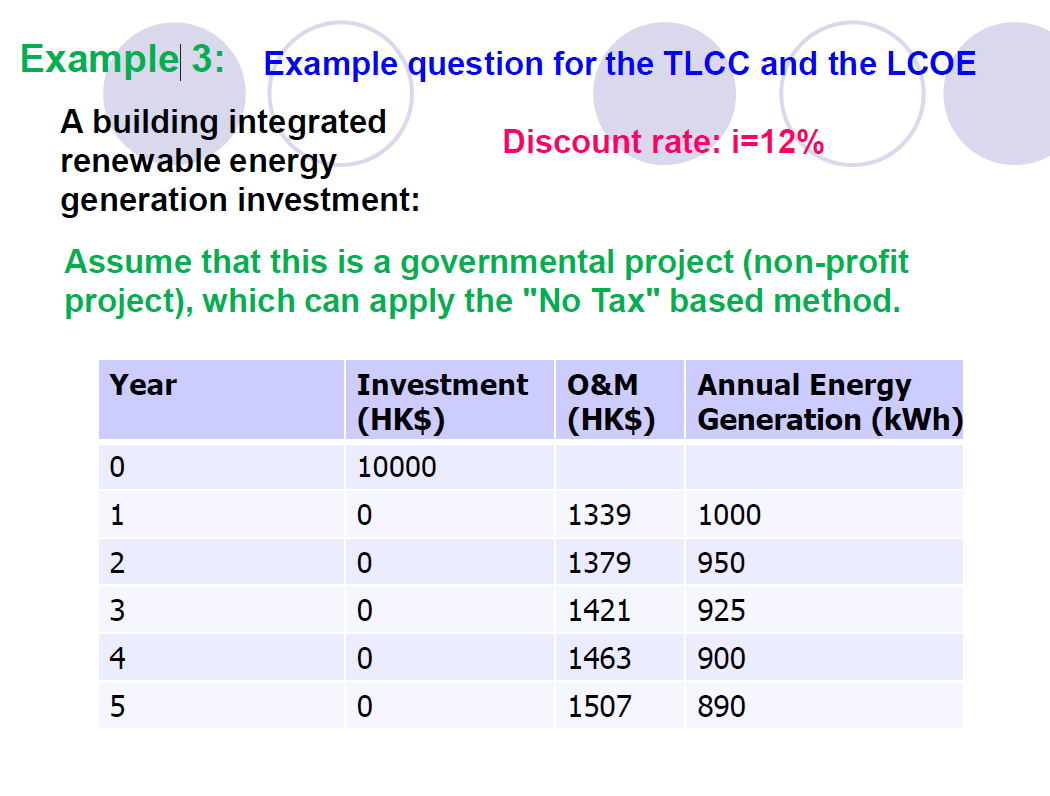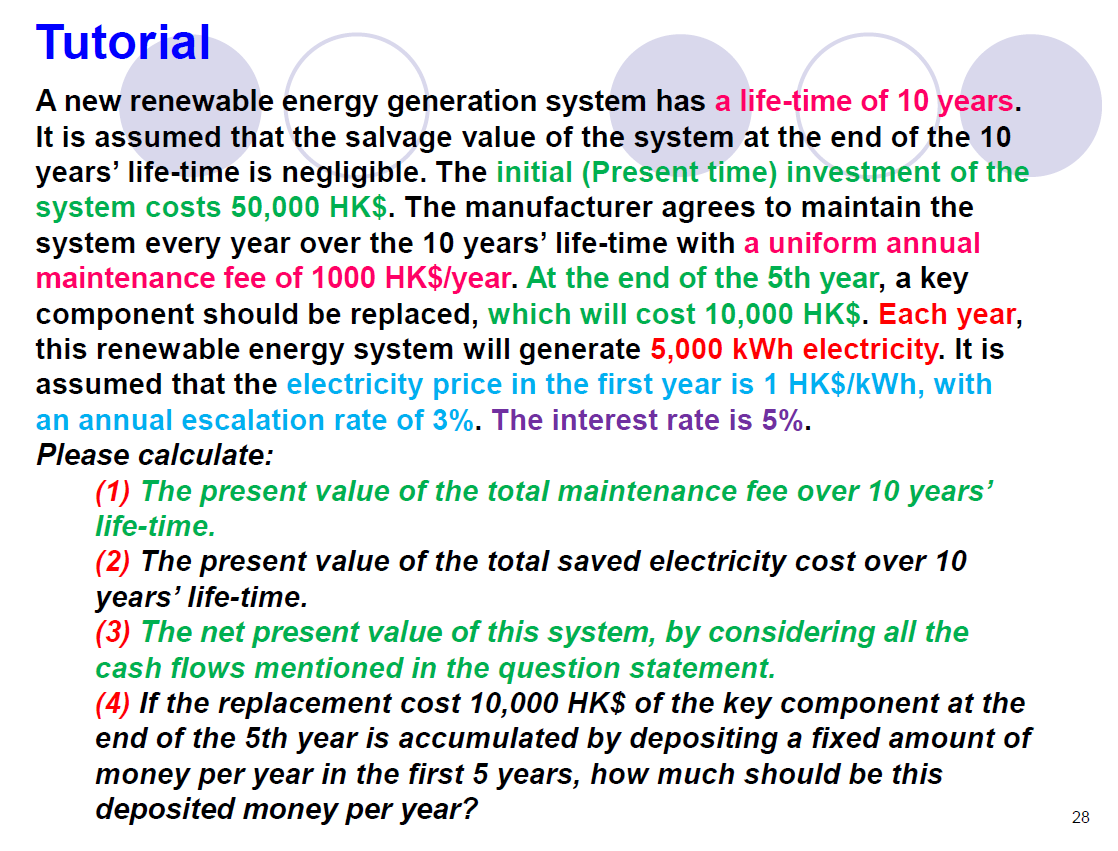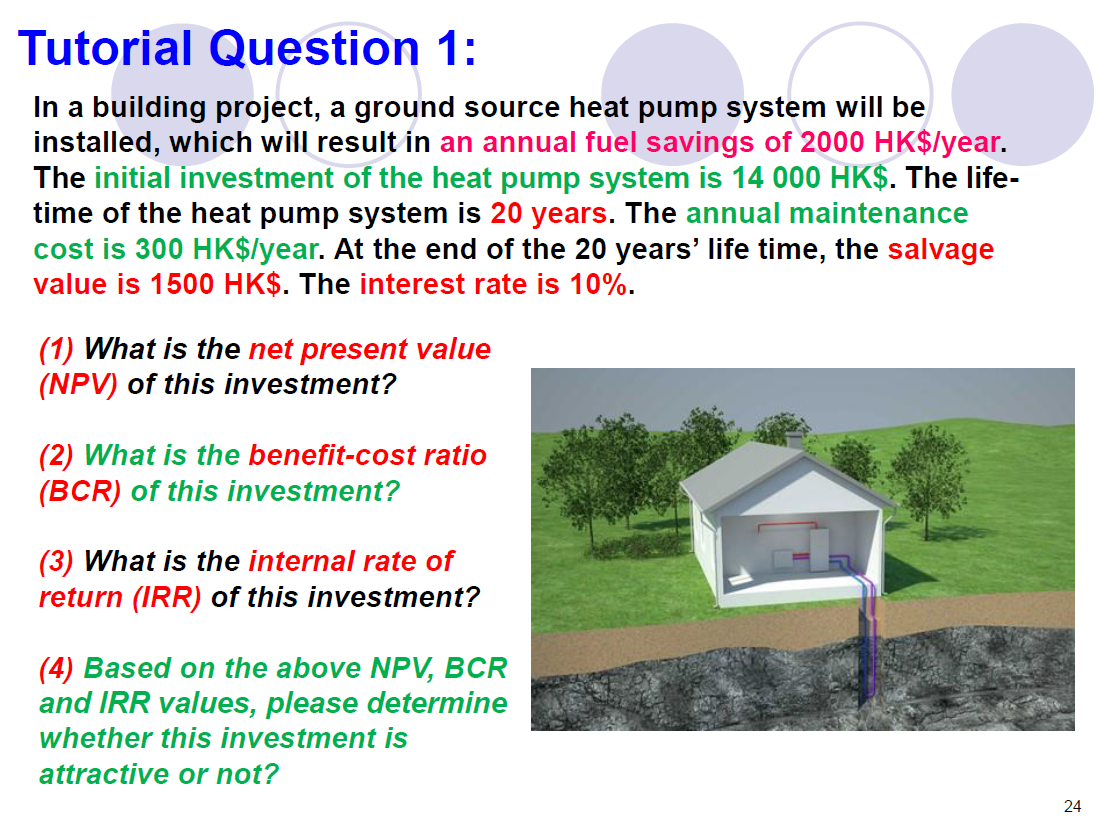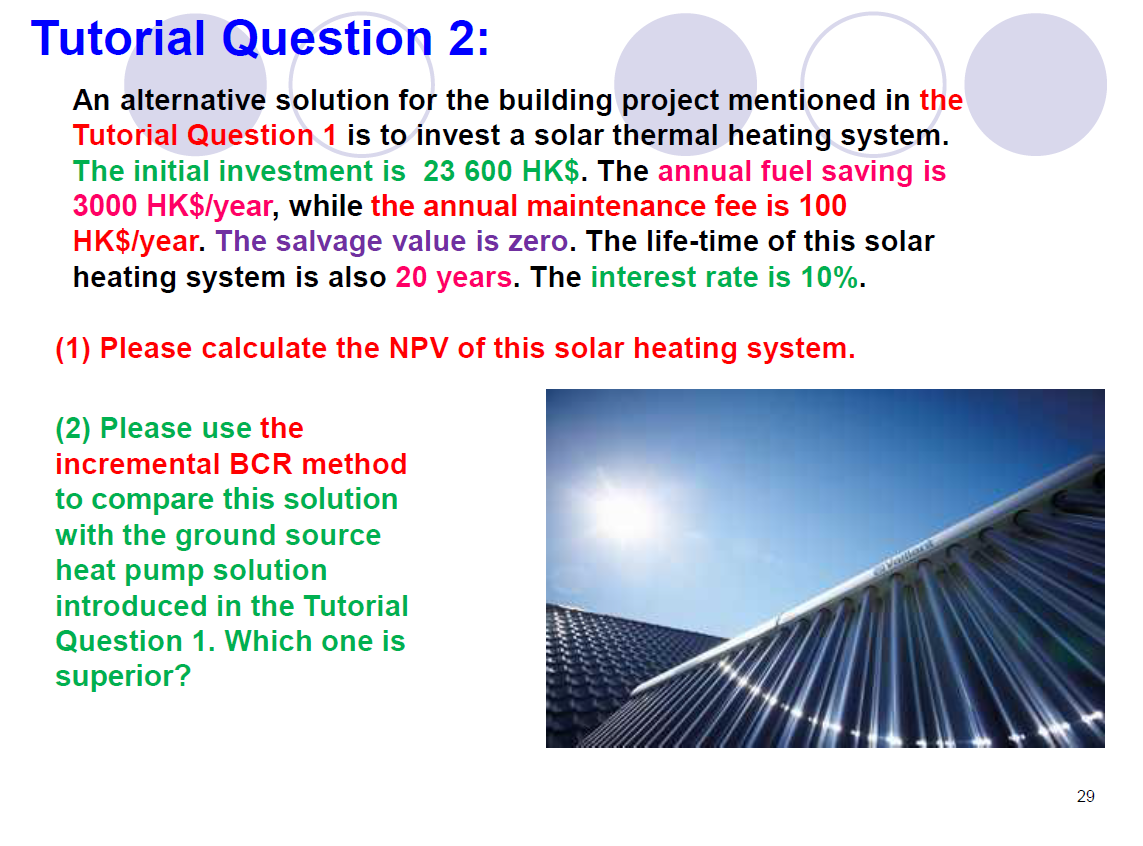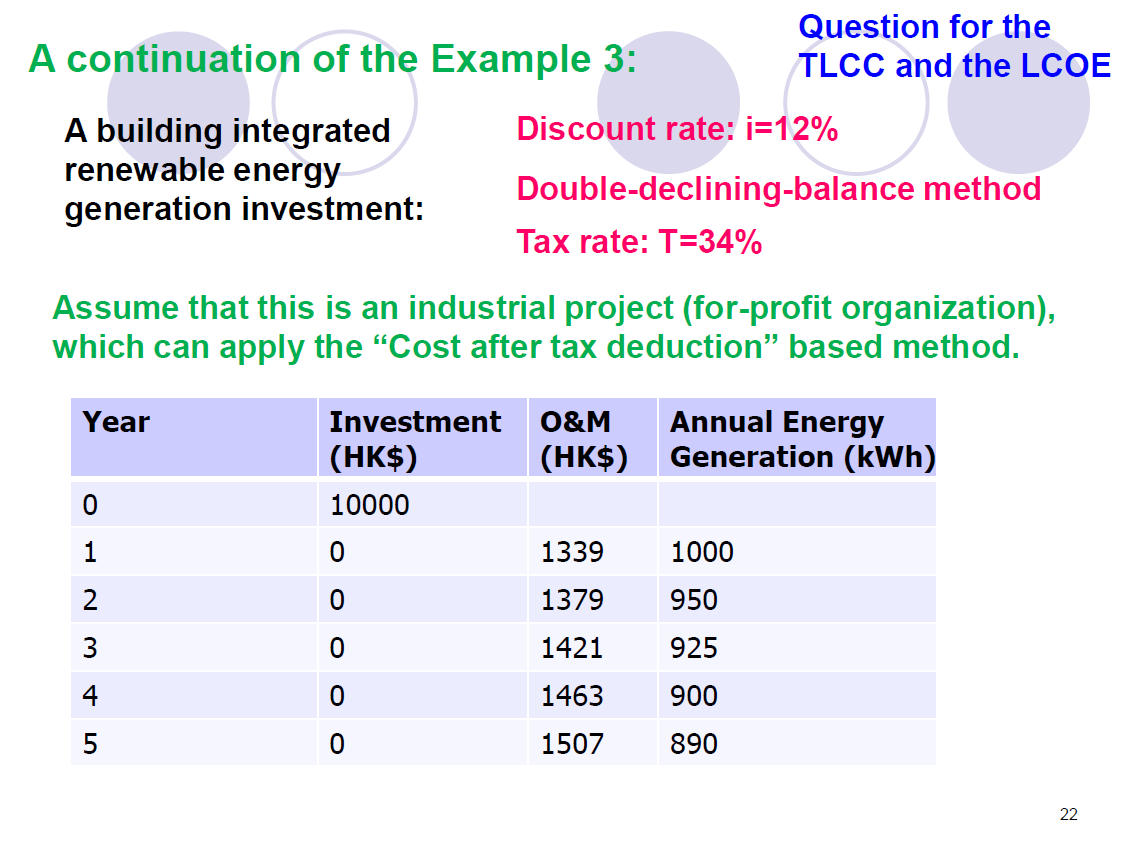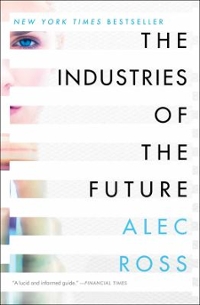a) Based on the Tutorial Question below (Fig 1), please investigate how the variations of the "interest rate" and "annual escalation rate of the electricity price" will affect the results of the tutorial question, and discuss and comment on their sensitivity. For example, the "interest rate" varies +/- 0~0.02 based on the original 0.05 (i.e. the interest rate varies in the range between 3%~7%), and the "annual escalation rate of the electricity price" varies +/- 0~0.02 based on the original 0.03 (i.e. the annual escalation rate varies in the range between 1%~5%).
Example 3: Example question for the TLCC and the LCOE A building integrated renewable energy Discount rate: i=12% generation investment: Assume that this is a governmental project (non-profit project), which can apply the "No Tax" based method. Year Investment 0&M Annual Energy (HK$) (HK$) Generation (KWh) 10000 1339 1000 1379 950 UI A W N H O ooooo 1421 925 1463 900 1507 890Tutorial A new renewable energy generation system has a life-time of 10 years. It is assumed that the salvage value of the system at the end of the 10 years' life-time is negligible. The initial (Present time) investment of the system costs 50,000 HK$. The manufacturer agrees to maintain the system every year over the 10 years' life-time with a uniform annual maintenance fee of 1000 HK$lyear. At the end of the 5th year, a key component should be replaced, which will cost 10,000 HK$. Each year, this renewable energy system will generate 5,000 kWh electricity. It is assumed that the electricity price in the first year is 1 HK$lkWh, with an annual escalation rate of 3%. The interest rate is 5%. Please calculate: (1) The present value of the total maintenance fee over 10 years' life-time. (2) The present value of the total saved electricity cost over 10 years' life-time. (3) The net present value of this system, by considering all the cash ows mentioned in the question statement. (4) If the replacement cost 10,000 HK$ of the key component at the end of the 5th year is accumulated by depositing a fixed amount of money per year in the first 5 years, how much should be this deposited money per year? 23 Tutorial Question 1: In a building project, a ground source heat pump system will be installed, which will result in an annual fuel savings of 2000 HK$/year. The initial investment of the heat pump system is 14 000 HK$. The life- time of the heat pump system is 20 years. The annual maintenance cost is 300 HK$/year. At the end of the 20 years' life time, the salvage value is 1500 HK$. The interest rate is 10%. (1) What is the net present value (NPV) of this investment? (2) What is the benefit-cost ratio (BCR) of this investment? (3) What is the internal rate of return (IRR) of this investment? (4) Based on the above NPV, BCR and IRR values, please determine whether this investment is attractive or not? 24Tutorial Question 2: An alternative solution for the building project mentioned in the Tutorial Question 1 is to invest a solar thermal heating system. The initial investment is 23 600 HK$. The annual fuel saving is 3000 HK$Iyear, while the annual maintenance fee is 100 HK$Iyear. The salvage value is zero. The life-time of this solar heating system is also 20 years. The interest rate is 10%. (1) Please calculate the NPV of this solar heating system. (2) Please use the incremental BCR method to compare this solution with the ground source heat pump solution introduced in the Tutorial Question 1. Which one is superior? Question for the A continuation of the Example 3: TLCC and the LCOE A building integrated Discount rate: i=12% renewable energy generation investment: Double-declining-balance method Tax rate: T=34% Assume that this is an industrial project (for-profit organization), which can apply the "Cost after tax deduction" based method. Year Investment 0&M Annual Energy (HK$) (HK$) Generation (kWh) 10000 1339 1000 1379 950 UA W N H O oo ooo 1421 925 1463 900 1507 890 22
